When and how to plant crocuses in spring and autumn: rules of care and cultivation
The appearance of the first crocus flowers in spring (the Latin name for saffron) is always welcomed by gardeners with great enthusiasm and a considerable dose of optimism, as it invariably signals the arrival of spring and the opening of the summer cottage season. Yellow, white, blue-violet positive flowers captivate with their tenderness, brightness, uniqueness of the cupped shape. That is why they can be seen so often on alpine slides, rockeries, flower beds, and in garden compositions. This plant is irreplaceable in containers, and in curbs, and in lawns. In addition, saffron is simply doomed to success due to its bitter spicy taste and strong smell, as well as the yellow coloring matter that is obtained from it.
How to plant and care for this unpretentious flower will be discussed in our article.
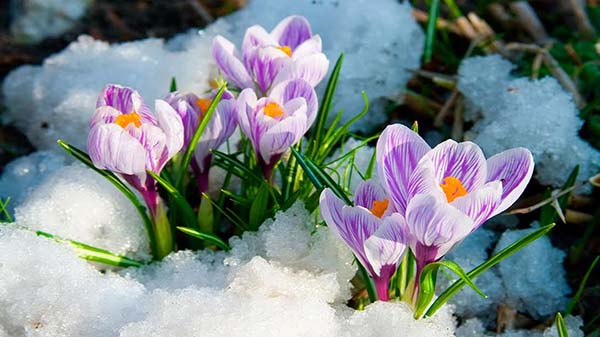
Content
Popular crocus varieties
Crocus differs in flowering time for:
- Early spring (February-April). As a rule, it is golden-flowered, or golden (Crocus Chrysanthus);
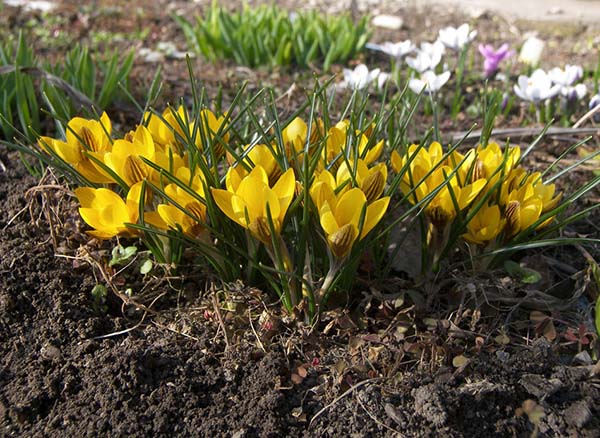
- Spring blooming (April-May). Spring (Crocus vernus);
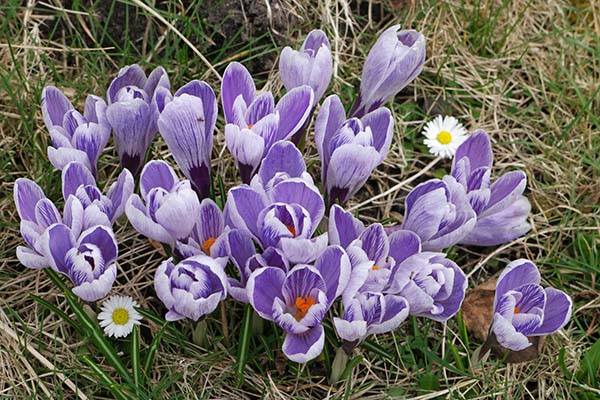
- Autumn blooming (late September - early December).
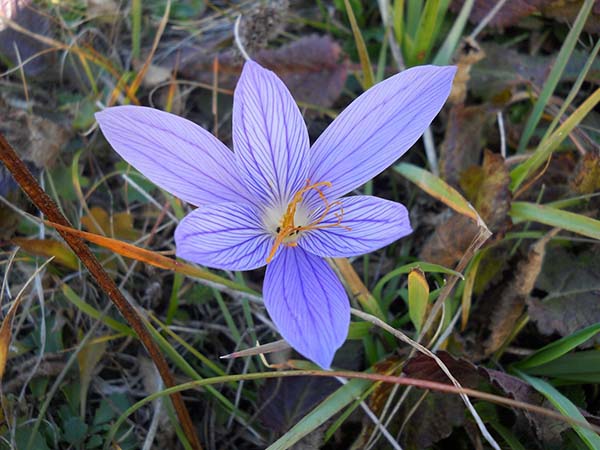
Lovely (Crocus speciosus)
The most popular autumn crocus varieties are:
- Beautiful (Crocus Speciosus);
- Pale ocher (Crocus Ochroleucus);
- Holoflower (Crocus Nudiflorus);
- Long-flowered (Crocus Longiflorus);
- Smoothed (Crocus Laeviatus);
- Saffron (Crocus Sativus) is the most elite and healthy.
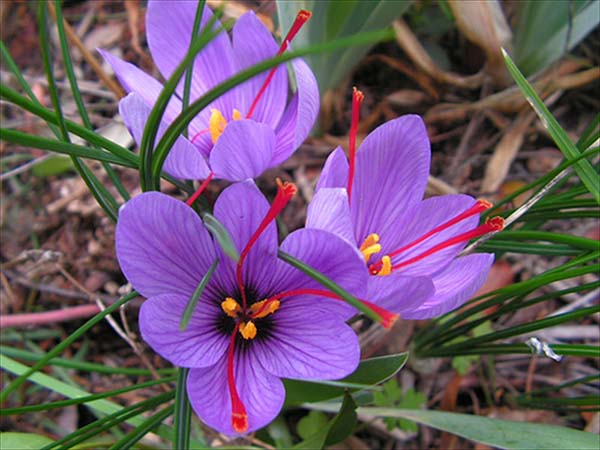
Important! The most famous and widespread are spring crocuses, so further we will focus on planting and growing them.
When to plant crocuses in spring and autumn
Like almost all bulbous plants, crocuses are planted in autumn. As for the certain autumn dates for planting in open ground, this is approximately second half of August - September, although the landing can be postponed and until October. In general, it is best to plant the bulbs 2-4 weeks before the first frost so that they do not have time to germinate. This means that you must definitely focus on the climatic conditions of your region of residence.
Recently, however, these beautiful bulbous flowers began to appear on sale in the spring, so they were often given in flowerpots on March 8th.
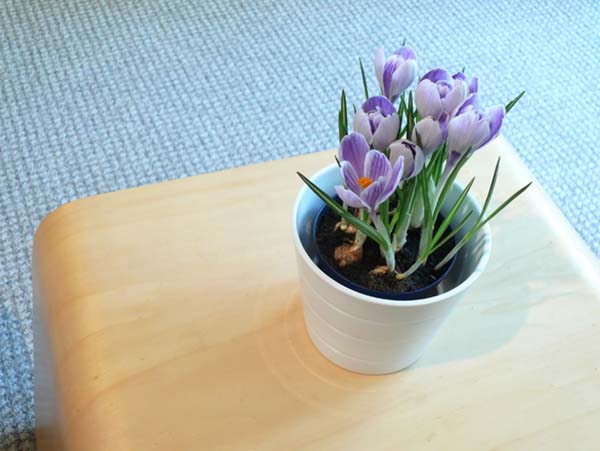
So, after they have faded, they can be quite successfully planted in the garden. In other words, crocuses can also be planted in spring, approximately in the beginning of April.
Tips for choosing quality crocus bulbs
In order for crocuses to decorate your garden in early spring, you must choose the highest quality plant bulbs, namely, before buying, you should carefully examine it:
- it should not show any signs of disease: mechanical damage, rot, stains and sores;
- the bulb must be healthy: dense and well dressed, that is, covered with dry scales;
- the bulb should not have overgrown roots and stems;
- it is better to choose the largest bulbs.
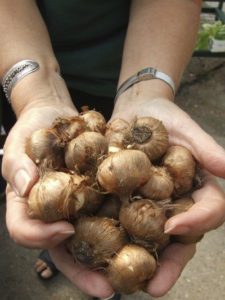
Planting crocuses in open ground
When planting crocuses in open ground, emphasis should be placed on choosing the most suitable place in the garden, the appropriate soil for planting the bulbs, as well as on the mandatory preparation and processing of the bulbs before planting.
Ideal place in the garden and suitable soil for planting bulbs
Despite the fact that crocuses are light-loving plants, they are often planted in flower beds and under the trees, because they can bloom already in late February-early March (some varieties later - in April-May), when there are no leaves on the trees yet, and accordingly, there will be no lack of sunlight either.
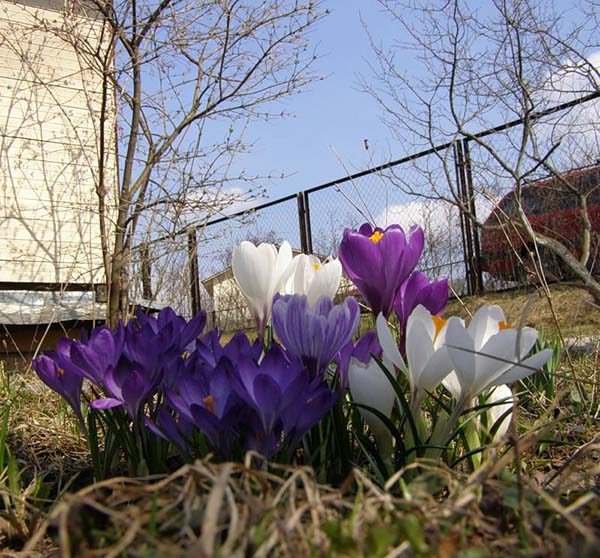
It is especially beautiful to plant saffron bulbs directly on lawn, because first mowing and beginning of spring care and restoration of lawn grass after winter, as a rule, falls on April-May, and by that time the crocuses will have already faded, and their green mass will be gone.
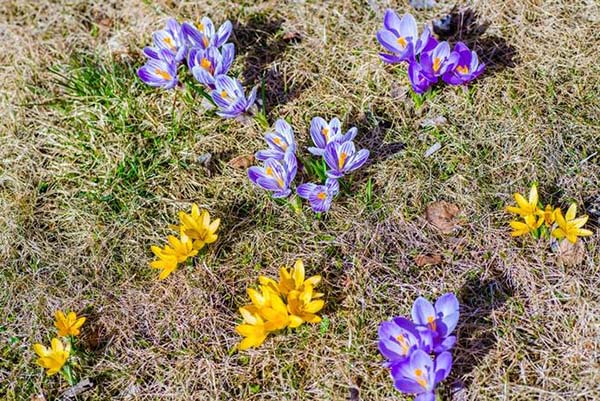
In general, for saffron it is better to choose the most sunny place in the garden, without drafts, that is, closed from strong winds.
As you know, bulbous do not tolerate stagnant water, because because of this they begin to rot. Therefore, the optimal soil for planting crocuses should be well-drained and relatively light, that is, loam or sandy loam soil is ideal.
If you are a "happy" owner of heavy (clay) or insufficiently fertile soil, then for the successful cultivation of saffron, it should be well fertilized before planting flowers.
When digging, sand or humus should be added to clay soil (at the rate of about 10-15 kg per 1 square meter of the garden), peat (0.5 kg per 1 square meter) and superphosphate (40 grams or 2 tablespoons per 1 sq. m).
If you have poor and sandy land, then during digging add peat, humus or compost to it (about 5-10 kg per 1 sq. M of the garden).
Note! So that the roots of the crocuses have where to break through,any soil needs to be dug 20-25 centimeters (on a shovel bayonet)
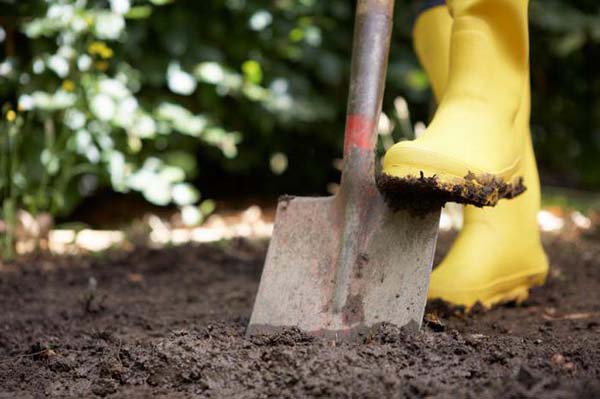
Preparing and processing the bulbs before planting
All bulbous plants must be treated before planting in the garden in order to prevent the formation of various rot and other diseases. There are several methods for dressing crocus bulbs. The easiest way of processing is a pink solution of potassium permanganate, you can also use special fungicides, such as "Maxim Dachnik" or "Fundazol", and various growth stimulants, such as "Epin", "Kornevin" or "Heteroauxin" will also go.
Important! As a rule, the average time for etching the bulbs is about 20-30 minutes, the consumption rate of the drug is 2 ml per 1 liter of water, but be sure to read the attached instructions first.
Planting in autumn
Advice! It is optimal to choose for disembarkation cloudy morning or evening after sunset, a dry and sunny day is the most unfavorable time for planting almost any crop.
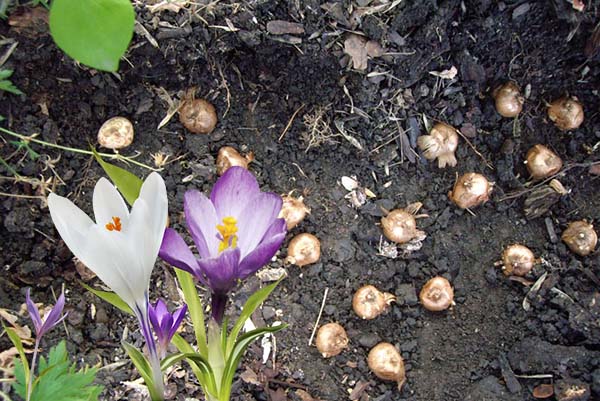
Step-by-step instructions for planting crocus bulbs in open ground in the fall:
- Choose the best spot in the garden.
- Prepare the planting hole by digging and fertilizing the soil.
- If the soil is very heavy, and there is a possibility of moisture stagnation, then pour a layer of sand on the bottom.
- The bulb should be planted with the bottom down, with the top up, not on its side.
- The planting depth of crocuses, like all bulbs, is 3 bulb heights, that is, it is about 5-7 centimeters.
- Saffron is a family plant, so the bulbs must be planted at a minimum distance from each other, that is, about 3-6 centimeters. However, if you plan to dig them up, then plant it better.
- Cover with earth and water abundantly.
- After planting, mulch the place with fallen leaves or spruce branches. This will be a kind of shelter for crocuses for the winter.
Video: two ways of planting crocuses in open ground in the fall
Landing in spring
In order to transplant crocuses donated in spring from a pot to open ground, you need to do the following:
- Cut off all flower stalks; leaves do not need to be removed.
- Remove from the pot along with the soil and divide.
- Plant at the same distance and the same depth as when planting in the fall.
- Further, all the manipulations are similar: cover with earth, water and mulch.
Video: planting crocuses in spring
Outdoor crocus care: growing rules
Crocuses do not require special care, so they can be called quite unpretentious flowers. However, in order for them to look more neat and bloom profusely, they still need some garden manipulations, namely:
- if necessary, loosening and weeding from weeds (in early spring and after flowering);
- moderate watering;
- timely feeding.
In spring, crocuses practically do not need watering, but after they have faded, it is closer to summer, if the weather is dry, then at least once a week they should be slightly moistened (especially if the soil is too sandy), but not in any case, do not pour, so that the tubers do not rot. If the fall is dry, then a couple of moderate watering will be great.
Timely application of mineral fertilizers can contribute to more productive development of plants.
Every year it is best to do 2 crocus feeding:
- In early spring, still in the snow, that is, before the start of the growing season, it is required to use nitrogen fertilizers, eg urea (carbamide) or ammonium nitrate, or better - complex, such as nitrophoska (nitroammophoska).
- Before or after flowering, it is reasonable to fertilize the plant with any potash-phosphorus fertilizer, for example, superphosphate (preferably double) and potassium sulfate, or potassium monophosphate, it is also good to feed wood ash (just sprinkle in a circle).
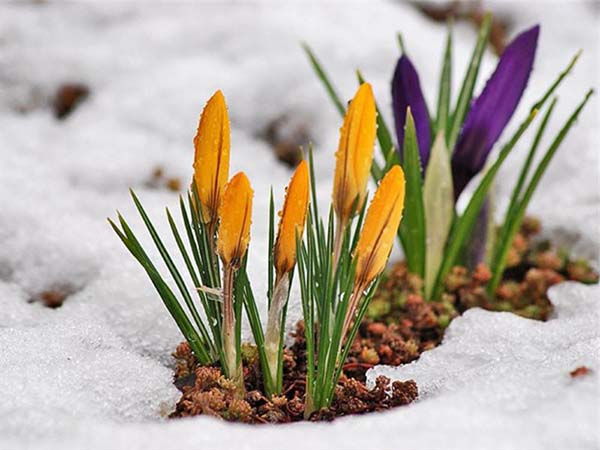
How to care for crocuses after flowering: digging and storing bulbs
In one place saffron can be grown for about 4-5 years.To dig up or not to dig up the crocus bulbs depends on how much the bushes have grown. If the plantings are too dense, then the flowers may become smaller, that is, in this case it makes sense to get the bulbs. As a rule, the time for digging comes when the leaves of the plant turn yellow and begin to dry out, that is, 2-4 weeks after flowering, approximately in May-June.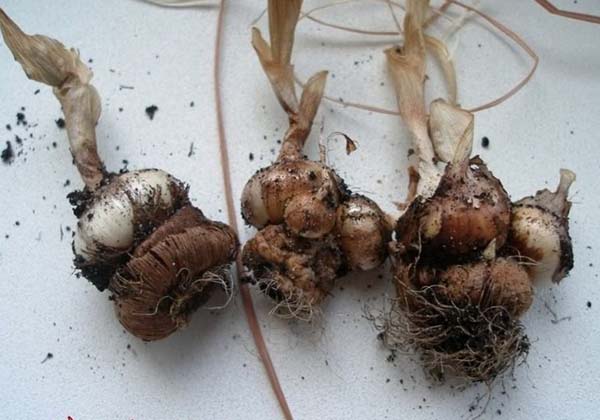
Next, they need to be sorted out, thrown out too sick and damaged, the remaining ones must be cleaned of the earth and put to dry for a week. Then sort by size and put into storage in a cardboard box in a dry and well-ventilated room (at a temperature of + 15-20 degrees), to be planted again in late summer - early autumn.
Video: what to do with crocuses after flowering
If there is no need for reproduction, then after the crocuses have faded and the leaves have withered, they should be cut off and mulched - covered for the winter (if this was not done even during planting).
By the way! Crocuses can also be propagated using seeds. More details in the video below.
Video: how to propagate crocuses by seeds
Why crocuses don't bloom: reasons
Gardeners often complain that their crocuses do not bloom in any way. There may be several reasons for this:
- Perhaps you have planted early spring varieties, so you simply do not have time to see their flowering, because the country bus can start walking quite late, for example, only from April, and they can have time to bloom in March.
- On the contrary, you could have planted autumn crocuses, the flowering of which does not begin until September-October, but their leaves also appear in the spring and die off by the end of May-beginning of June.
- Mice often like to feast on flower bulbs.
About, how to protect bulbs from rodents, told here.
- There was an excessive division of the bulbs, which is why they simply could not bloom due to a banal lack of strength after the breeding process.
- The planting was too deep, or the soil is too heavy or clayey, due to which the sprouts cannot break through to the light.
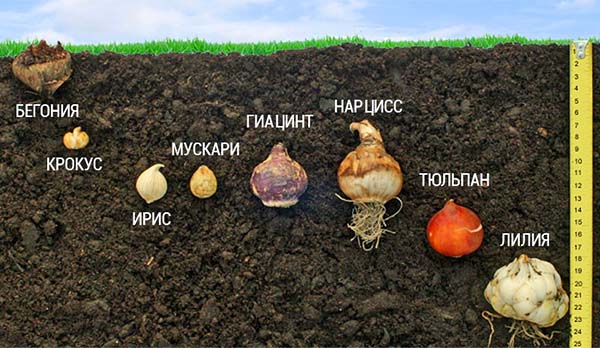
The decisive steps in planting crocuses in spring and fall should be choosing the right garden location, choosing the right soil, and how to properly prepare and handle the bulbs before planting. In addition, in the culture of novice flower growers, there should be rational outdoor care and care after flowering. And then the captivating crocuses will only delight you!

